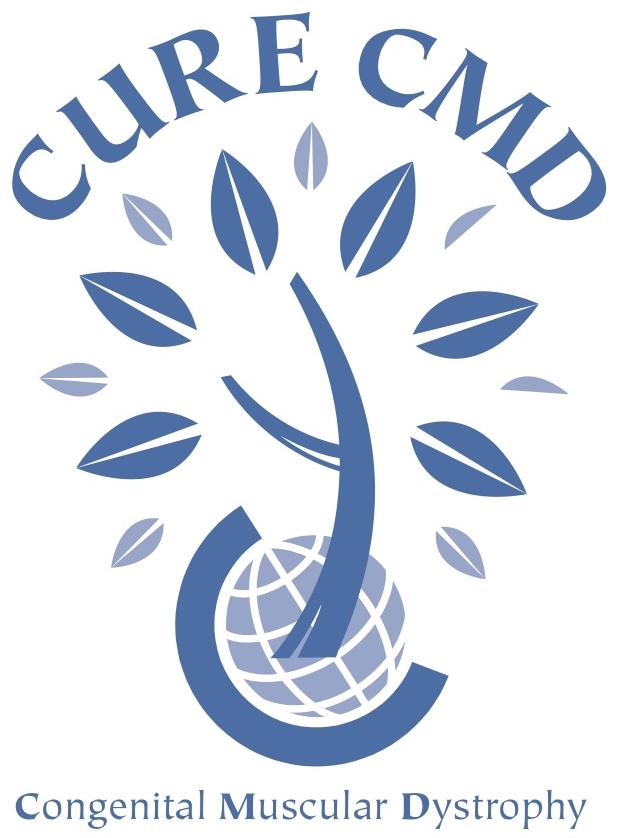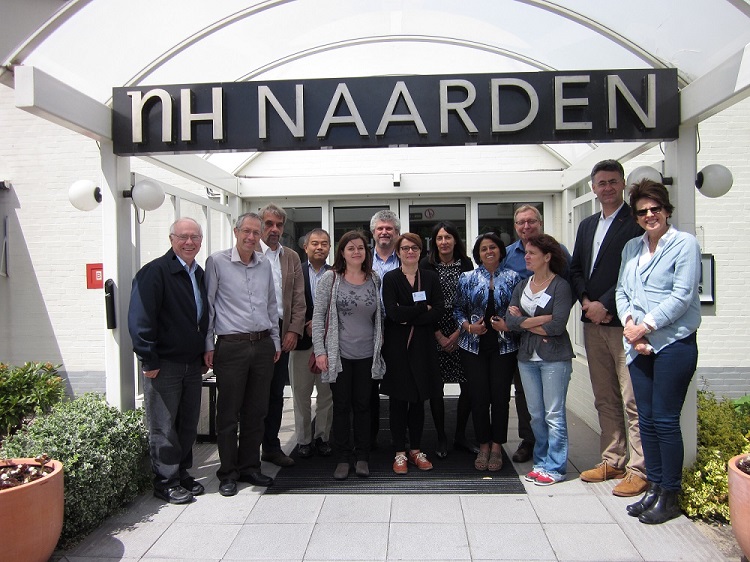Animal models in CMD
- Number 212
- Date 29 May 2015
Location: Naarden, The Netherlands
This 212th ENMC workshop was made possible by co-funding of Cure CMD:

Organisers
Valérie Allamand (Paris, France); Madeleine Durbeej-Hjalt (Lund, Sweden); Carsten G. Bönnemann (Bethesda, USA).
Description
The 212th ENMC workshop entitled « Animal models of Congenital Muscular Dystrophies » took place on the weekend of the 29th to the 31st of May 2015 in Naarden, The Netherlands. Thirteen participants from 8 countries (France, Israël, Italy, Japan, Sweden, Switzerland, United Kingdom and USA) attended this workshop, including clinical and basic science researchers. A PhD student participated with support from the ENMC Young Scientist Program.
Background
Congenital muscular dystrophies (CMD) constitute a heterogeneous group of rare genetic muscle disorders, the symptoms of which start at birth or within the first few months of life. Over the past decade, the understanding of their defective molecular basis has expanded greatly, with close to 20 genes known to be involved to date. For the majority of the CMD cases, the proteins involved play major roles in the connection between muscle fibers and the surrounding extracellular matrix (ECM), but some cases are also caused by defects of several proteins from the envelop of the nucleus, the compartment of the cell that contains the DNA.
This workshop focused on the three most common forms of CMD:
- alpha-dystroglycanopathies, caused by an abnormal glycosylation of alpha-dystroglycan (α-DG), a central protein of the dystrophin-glycoprotein complex (DGC) which is one of the major receptors on muscle cell surface;
- LAMA2-related muscular dystrophies, due to a deficiency of laminin-211 (also known as merosin), a protein that forms a network surrounding skeletal muscle cells, and which directly binds to cell surface receptors of muscle fibers;
- COLVI-related muscular dystrophies, due to a deficiency or dysfunction of collagen type VI (COLVI), a major extracellular matrix protein in many tissues.
In order to further understand the pathogenic mechanisms at play, and to assess therapeutic options for these disorders several animal models have been developed, mostly in mice and zebrafish. As clinical trials are commencing or are reaching advanced planning stages, the characterization of these animal models has highlighted the need for a detailed comparison of their disease features, onset and evolution, as well as their adequacy to translate to the human conditions.
Aims of this workshop
- to determine the value of the animals models currently available for each of the three disease groups, and whether some aspects of the human disease features need further modeling (e.g. brain, skin, overall severity…)
- to assess the tools (i.e. antibodies, protocols…) available to study these models, to define the most adequate tool(s) to use for different types of experiments and to consider sharing them between laboratories
- to discuss whether standard operating procedures (SOPs) for animal studies should be implemented or refined to improve reproducibility between laboratories
- to identify outcome measures to enable comparison of the data emanating from the various models
What was achieved?
In the first part of this workshop, for each CMD subgroup a short clinical introduction was given by Dr. Bönnemann. Then participants presented novel information, covering the models available and the different therapeutic strategies currently under development. The different approaches ready for clinical trial were also summarised. Then, the participants collectively discussed the actual needs in terms of animal models and tools, and several points were raised, such as whether cellular models should be developed in parallel. Collaborative strategies to share antibodies and biological samples to address some of these points were discussed and agreed upon. The discussion also included reminders on the importance of SOPs and the need to compare the information across the different models and laboratories. The development of a registry of the several models, with information on their disease features, the laboratories where they are available, etc. was discussed and well received by all participants. Finally, the current preclinical therapeutic “pipeline” was reviewed and the role of animal models in advancing the pipeline was assessed.
The following key deliverables were achieved:
- The need for creating animal models on different strains was recognized and the consortium will try and petition for a central facility to carry out this time-consuming and expensive task.
- Several collaborations were initiated and future common funding applications for research projects were discussed. Participants will keep in contact should funding opportunities arise in the future.
- A registry will be developed which catalogues the different animal models available and all known/relevant information.
Participants
Valérie Allamand (Paris, France); Paolo Bonaldo (Padova, Italy); Carsten Bönnemann (Bethesda, USA); Susan Brown (London, UK); Dean Burkin (Reno, USA); Kevin Campbell (Iowa City, USA); Madeleine Durbeej-Hjalt (Lund, Sweden); Mahasweta Girgenrath (Boston, USA); Yoram Nevo (Israël); Markus Rüegg (Basel, Switzerland); Margot Saunier (Paris, France); Tatsushi Toda (Kobe, Japan); Raffaella Willmann (Zürich, Switzerland).
A full report is published in Neuromuscular Disorders (pdf)

